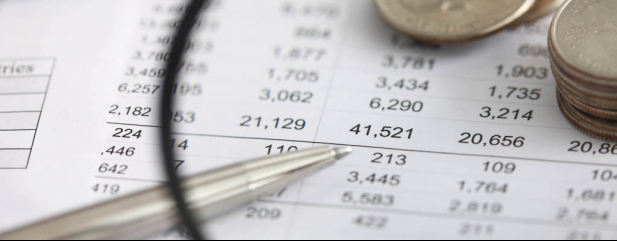Archived article
Please note that tax, investment, pension and ISA rules can change and the information and any views contained in this article may now be inaccurate.
Six big mistakes to avoid ahead of the end of the tax year

Missing out on free money
Whether it’s your pension, your Lifetime ISA or ensuring you claim tax breaks that you are eligible for, you want to make the most of any free government cash that you’re entitled to. Pensions benefit from tax relief at 20% for basic-rate taxpayers, but higher and additional rate payers can reclaim an additional 20% or 25% tax relief respectively through their tax return. That means for a higher-rate taxpayer every £1 in your pension only costs you 60p
Anyone using a Lifetime ISA can also get up to £1,000 of free money from the government each year, if you put in the maximum £4,000 subscription. So, if you have some spare cash you were planning to put into your Lifetime ISA and still have some of this year’s allowance left, make sure you do it before the tax year end and claim that free cash.
Just be aware that you can withdraw Lifetime ISA money once you’ve reached age 60 or earlier to buy your first property, but if you take the money for any other reason (apart from severe ill health) you’ll pay an exit penalty of 25%.
You should also check that you’re claiming any government tax-breaks that you’re eligible for, such as the marriage allowance or claiming tax-free childcare, which gives a 20% top-up to money you use for childcare.
Not sheltering more of your investments from tax
If you’ve got investments outside of your ISA you can use something called ‘Bed and ISA’ to funnel them into an ISA and protect them from tax. You need to check you’ve got some of your £20,000 ISA allowance left and that the investments can be held in your ISA.
You can then use your investment platform’s Bed and ISA service, which means the investment outside of the ISA is sold, the proceeds moved into an ISA and used immediately to purchase the same investment within the ISA.
You just need to be aware that if you’ve made any gains on the investment outside an ISA you may have to pay tax on them when you sell them as part of this process. For this reason lots of people sell enough of the investment to take them up to their CGT (capital gains tax) allowance of £12,300.
Not using all your tax-free allowances
Any investments held outside an ISA or pension will be subject to capital gains tax, which means the annual tax-free allowance is very valuable. Investors can make investment gains of up to £12,300 in 2021/22 without paying any tax.
Gains over that amount are added to income and if they fall in the basic-rate tax band are taxed at 10% and if they fall in the higher-rate tax band are taxed at 20%. An additional 8% is added to the tax rate if the gains are from a second property.
The annual capital gains tax allowance cannot be carried forward into future years so if you don’t use it, you lose it. If you have investments with gains outside of an ISA or pension you should consider whether to realise some of that gain before the end the tax year to make the most of your tax-free allowance.
If you’re in a couple you can get double this allowance as you can transfer investments to your spouse or civil partner in order to use their annual CGT allowance too. This means that for the current tax year you can lock-in up to £24,600 of gains before you face any tax.
Paying into more than one of the same type of ISA in a year
You’re only allowed to pay into one of each type of ISA each tax year. This means that you can pay into a Cash ISA and a Stocks and Shares ISA in one year, but not into two different Cash ISAs (and a Help to Buy ISA is a Cash ISA so you can’t pay into both).
It’s tricky though, as you’re allowed to have more than one open, you just can’t pay into two in the same tax year. With the rise of investing apps and people using multiple providers for different types of ISA, it’s harder for people to keep track of what they’ve paid into in each tax year.
If you accidentally pay into more than one ISA in a year, don’t attempt to fix it yourself, as you may close the wrong ISA. Instead, call HMRC’s ISA helpline on 0300 200 3300 to get advice on what to do.
Paying more than your allowance into your ISA
Every adult has a £20,000 annual limit for their ISAs each year, but within that there are different limits. For example, a Lifetime ISA has a £4,000 annual limit, which counts as part of your overall £20,000 limit. And a Help to Buy ISA has a limit of £200 a month, which also counts towards the £20,000 limit. If you have different ISAs with different providers it can be easy to accidentally pay in too much.
If you realise you’ve done this then you shouldn’t attempt to just withdraw money from one ISA yourself. Instead you should call HMRC’s ISA helpline on 0300 200 3300 to explain the situation. HMRC will work out which ISA had the payment into it that breached the limit and will reclaim the money. They will also charge you for any tax owed.
Not beating the dividend tax rise
People with lots of income-producing investments outside of an ISA or pension will face a higher tax rate from April if they earn more than £2,000 in dividends in a tax year. That’s because the dividend tax is rising, with an extra 1.25 percentage points being added to all the tax rates.
That means any dividend income you get above the tax-free allowance is taxed at 8.75% for a basic-rate taxpayer, 33.75% for a higher-rate taxpayer or 39.35% for additional-rate taxpayers. Assuming a 4% income on your investments, anyone who has more than £50,000 invested in dividend-producing assets outside an ISA is likely to be hit by this rise.
For example, someone with £10,000 of dividends outside an ISA will pay an extra £100 a year in tax as a result, taking their tax bill to £700 if they’re a basic-rate taxpayer, £2,700 at the higher rate and £3,148 at the additional rate. (This assumes someone hasn’t already used their £2,000 tax-free dividend allowance but has used their personal allowance).
This means that it’s more beneficial than ever to put your income-producing investments inside an ISA, to protect them from tax. You can use the same Bed and ISA process mentioned above to move assets into an ISA. By using this year’s ISA allowance and immediately using next year’s at the start of the new tax year in April, you can shelter £40,000 from the taxman before the dividend hike bites. If you’re a couple and both haven’t used your allowances you can move £80,000 in before the tax rise comes in.
But rather than moving just any assets into the ISA, investors should prioritise the highest income-paying investments as they are the ones that will be hit hardest by the dividend tax. So investors should rank their investments from the highest dividend paying to the lowest, in pounds and pence, rather than percentage terms. They should then work through the list, shifting the highest yielding investments into the ISA first to cut their tax bill.
Important information:
These articles are provided by Shares magazine which is published by AJ Bell Media, a part of AJ Bell. Shares is not written by AJ Bell.
Shares is provided for your general information and use and is not a personal recommendation to invest. It is not intended to be relied upon by you in making or not making any investment decisions. The investments referred to in these articles will not be suitable for all investors. If in doubt please seek appropriate independent financial advice.
Investors acting on the information in these articles do so at their own risk and AJ Bell Media and its staff do not accept liability for losses suffered by investors as a result of their investment decisions.

 magazine
magazine








